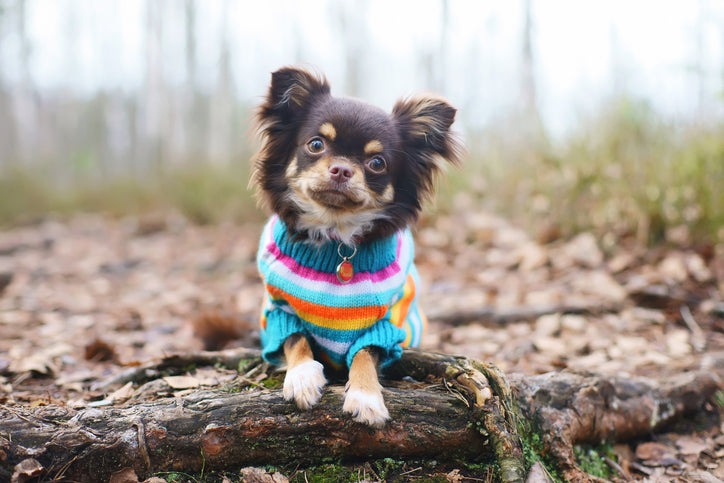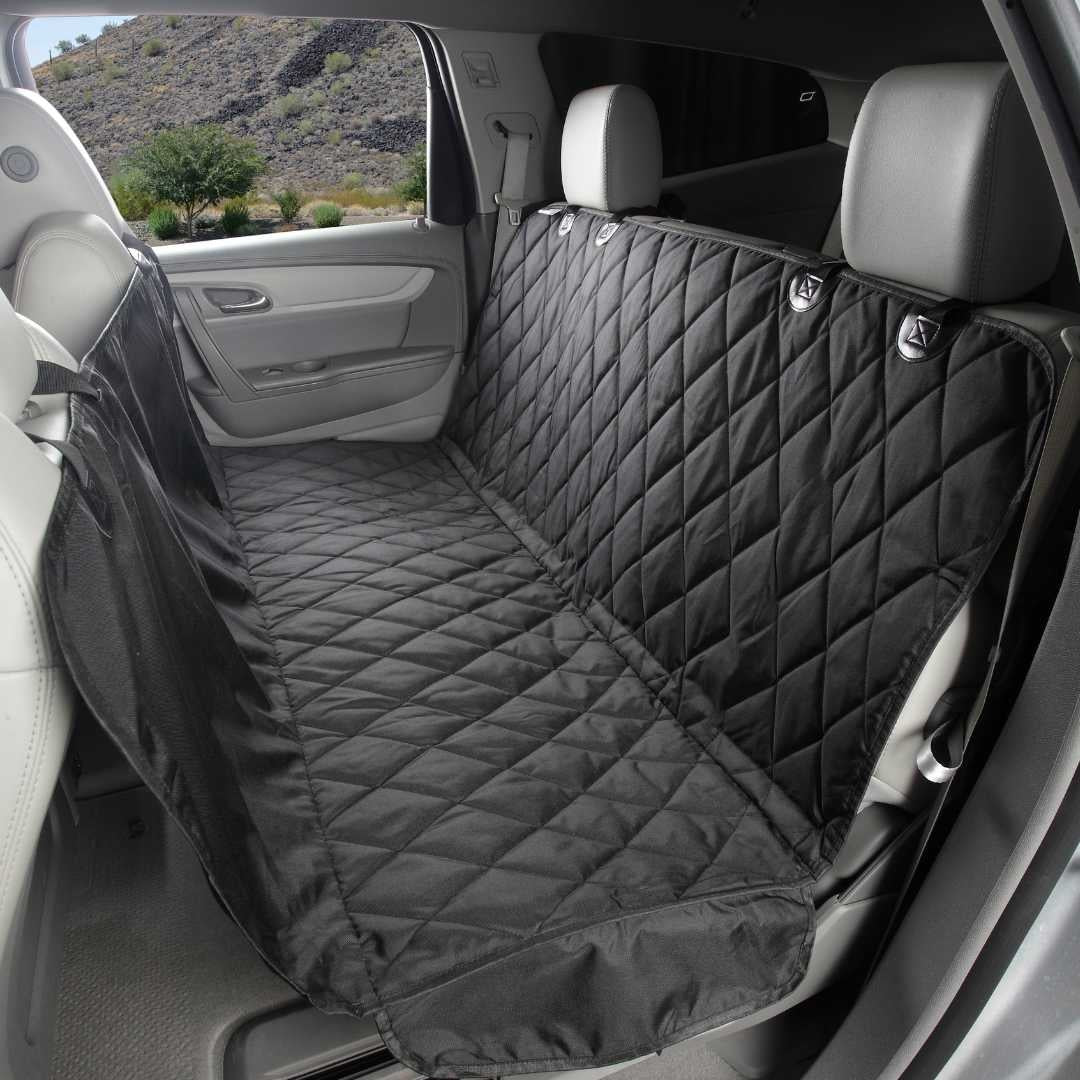Does your dog need a sweater? The answer depends on where you live, what kind of dog you have, and in some cases, personal preference. I love dog sweaters (and so does my dog), but I also live in the Midwest where sub-zero days in January and February are the norm.
Dogs with thick fur stay warm on their own as long as they stay dry. While others – shorthaired or short-legged dogs, seniors, puppies, toy breeds, thin dogs with very little body fat, and dogs with chronic health or immune system issues – need the extra layer when the temperatures drop.
How to Choose the Perfect Sweater for Your Dog:
Purpose
The first consideration is what kind of sweater your dog needs: Is the purpose of the sweater to keep your dog protected and warm outside or toasty and fashionable inside? A sweater meant for outerwear should be heavier with more coverage than a sweater for around the house. My dog is a short-legged, small, senior with some immune-system issues and has both inside and outside sweaters (as well as winter coats for severe winter weather).
Fit
The ideal sweater is snug against the skin, but not so tight that dogs can’t move. An outside sweater should give good coverage, protecting the back and a portion of the stomach, though not so much that it gets in the way when they do their business. While an inside sweater should also fit, it doesn’t need to provide as much coverage. Always double-check the front legs and neck for comfort and mobility.
You should measure your dog’s neck, the distance from the neck to the tail, and around the widest and narrowest part of the chest. Brands have different systems so always check your dog’s measurements against the brand’s sizing chart. When possible, try on coats in the store or order from online sources that allow easy returns. If you are fortunate to have someone knitting your dog a sweater, make sure they also have your dog’s proper measurements.
Always be realistic about your dog’s anatomy. A Yorkshire terrier and Dachshund may both be small, but clearly they have very different body shapes.
Material
Again, always consider your climate as well as your dog’s breed, shape, temperament, and size. Inside sweaters should be lightweight and breathable while outside sweaters should provide a bit more protection. Wool is very warm, but also sometimes itchy and not always washable – cotton, acrylic or fleece might be better choice. If you live in a damp climate, a coat with a water resistant shell is a smarter option with a lightweight sweater for around the house.
Winter is messy and dogs and their sweaters get dirty. Always make sure the sweater is durable and machine washable. I also recommend dark colors for outside sweaters, which hide the dirt and stay clean longer.
Special note: buttons and other add-ons are adorable but can be a choking hazard.
Taking It On and Off
Obviously, you want a coat that is easy to take on and off. This is especially true for senior dogs that may need extra time or puppies that won’t sit still for long. Pullovers are great for easy, patient dogs. But sweaters that wrap around the body and fasten with Velcro are by far the fastest and easiest for everyone else.
Holiday Sweaters
Holiday sweaters are a fun way to celebrate the season with your dog. However, your dog’s comfort level should always come first. Some dogs just don’t like wearing clothes. Never force your dog to wear anything that makes them uncomfortable. If your dog doesn’t like wearing sweaters, maybe get them a nice holiday fleece or throw for their bed instead.
Bundle up, stay warm and enjoy winter the holiday with your dog!
 Kristin Avery
Kristin Avery
Kristin Avery is a writer and photographer with an extensive background in philanthropy and a life-long passion for animal welfare. Her blog, The Daily Pip, is an award-winning, lifestyle pet blog providing resources, support, and humor for rescue families. She was recently honored with two BlogPaws Nose-to-Nose Social Media Awards this year: Best Cause Blog and Best Written Blog Post.
Kristin received her MFA from The School of the Art Institute of Chicago where she studied creative writing as well as installation and visual arts. After graduation, she was a founding member of Red Door Animal Shelter, a no-kill shelter for cats, dogs, and rabbits in Chicago. She enjoys working with local Chicago shelters and also recently spent several days at Best Friends Animal Society volunteering at Quincy House with cats with severe special needs including paralysis. Through her blog and volunteer work, she encourages and advocates for rescue and adoption, especially for those animals considered less adoptable. She currently shares her home with one dog, one rabbit, two cats, a husband and 10-year-old daughter.




 Kristin Avery
Kristin Avery 


